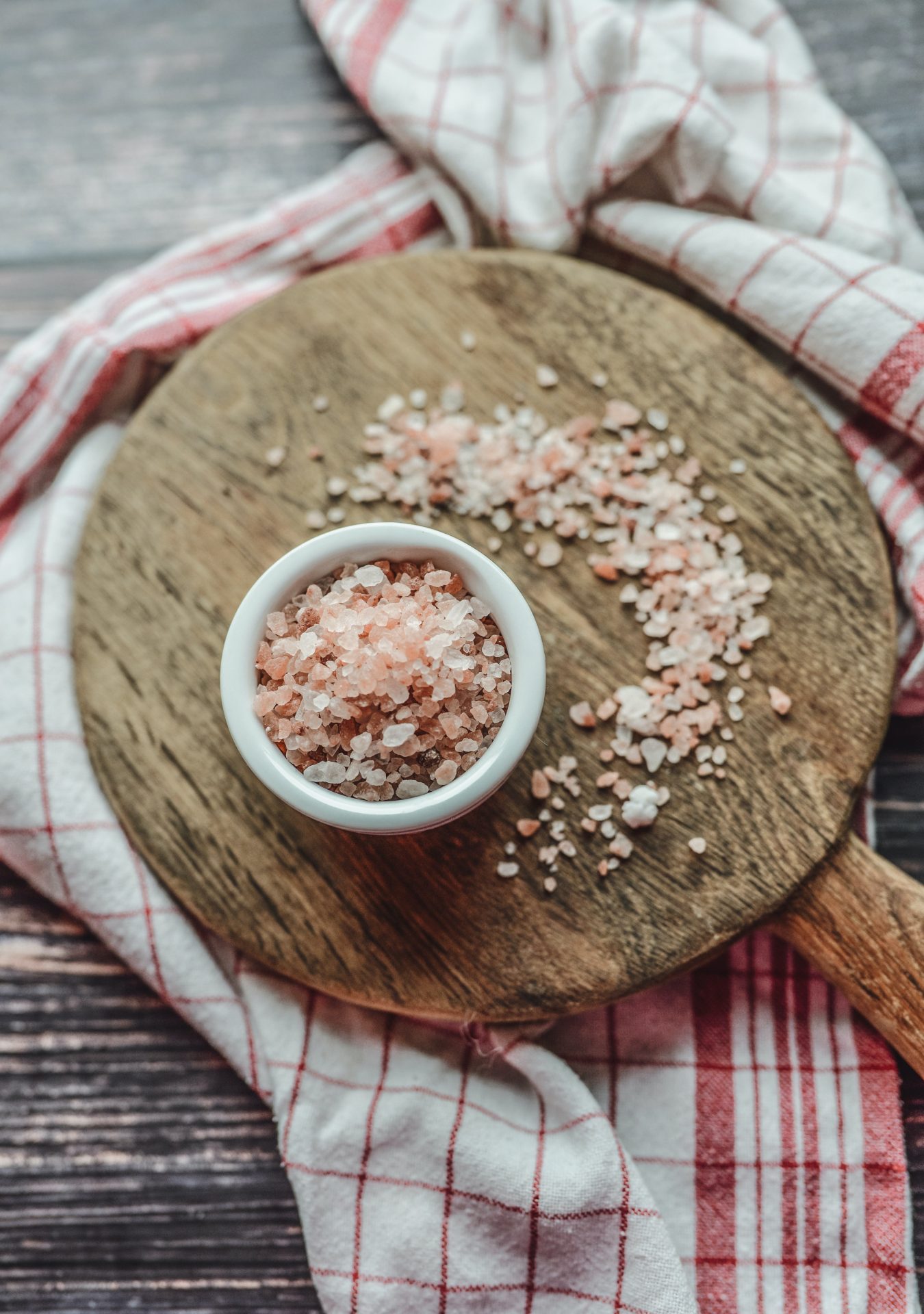Does your family follow a plant based diet? There are many reasons why families may choose to eat in this way, and while we fully support your choices, it is important to acknowledge some potential nutrient gaps so that you can thoughtfully prepare your child’s meals and ensure they are thriving and well nourished.
The first thing to consider when following a plant based diet is to ensure you are primarily eating whole foods. Just like regular processed foods, there are many vegan processed foods available (meat substitutes, vegan cheese etc) that are not nutrient dense or health promoting options. Building your meals around fresh fruit and veggies, whole grains, legumes, organic soy, nuts and seeds will not only ensure you are getting a wide variety of nutrients, but you’ll be minimising the consumption of many inflammatory and nutrient void ingredients. Check out the ingredients of a popular “meat substitute” – Water, Soybean Oil, Textured Soy Protein (Non-GMO Soy Protein Isolate, Wheat Starch, Wheat Protein, Stabilisers (170, 516), Modified Starch (1414), Salt, Yeast Extract, Sugar, Hydrolysed Vegetable Protein, Vegetable Extracts (Pea, Carrot), Flavours, Smoke Flavour, White Pepper, Colours (172) – not really the best choice for our kids!
Some of the key nutrients that may need a little extra thought when following a plant based diet include:
PROTEIN
Many plant foods contain protein, however they are often limited in one or more essential amino acids. When we eat a variety of plant based proteins over the day we will generally complete these gaps. This is known as protein combining or complementary proteins – and while previously it was thought that the different sources needed to be consumed in the same meal, we now know that eating them in approximately the same 24 hour period will be sufficient. Often we do this naturally with our food choices, but some examples include:
-
Nuts and seeds with whole grains (eg. peanut butter on sourdough toast)
-
Legumes/beans with whole grains (eg. Lentil dahl with rice)
-
Corn with legumes/beans (eg. mexican beans with corn tortilla)
There are some plant foods which are considered to be complete proteins – that is they contain all the essential amino acids. These are:
-
Quinoa
-
Buckwheat
-
Hemp seeds
-
Blue-green algae
-
Soybeans
Just be mindful that these foods don’t contain as much protein per gram as animal proteins (or you may not eat the same amount – I don’t think I’ve met anyone who eats 100g of spirulina ), so variety over the day is still key.
IRON
While iron is present in some plant based foods, the form (non-haem iron) is different to the iron found in animal foods (haem iron). Haem iron is more bioavailable, meaning it is absorbed more efficiently than non-haem iron (15-35% absorbed in haem iron compared to 5-12% in non-haem iron) (Hurrell & Egli, 2010). So while it is still possible to obtain sufficient amounts of iron from a plant based diet, it does need to be slightly more intentional.
The recommended daily intake (RDI) of iron for our little ones is between 8-11 mg per day (depending on age and health status)(NHMRC). Due to the poorer absorption of plant based iron, you may even need to aim a little higher. Some plant based sources or iron are included in the table…
So for a serving this might look like:
-
½ cup lentils = 3mg iron
-
½ cup cooked spinach = 3.5mg iron
-
½ tbsp tahini = 0.5mg iron
This is not a complete list of iron containing foods, but you can see that with a little thought and consideration you can achieve the RDI of iron from plant based sources. To further improve the absorption of non-haem iron, aim to include vitamin C rich foods at the same time. This will often happen naturally if you include a variety of veggies (particularly capsicum, broccoli, spinach) and some fruit (kiwi fruit, strawberries, citrus fruits), and minimise the consumption of calcium rich foods or beverages (i.e if you are vegetarian and consume dairy foods, don’t offer a big drink of cow’s milk or a large amount of cheese whilst your child is eating an iron rich meal). Some examples of an iron rich meal/snack could be:
-
Whole wheat pita pocket with quinoa tabouli and lentil patties
-
Spinach and parsley pesto with pasta
-
Homemade bliss balls with prunes, almonds, pepitas and tahini
-
An iron rich smoothie with strawberries, milk of choice, spirulina, almonds, tahini and a handful of spinach
ZINC
Zinc is a vitally important nutrient for our children, with a deficiency not only impacting their growth and development, but also things such as immune function, neurotransmitter production, digestion and metabolism, connective tissue integrity and more (Linus Paulling Institute). Like iron, zinc can be found in plant based foods, but is not as easily utilised or absorbed as the animal based alternatives. This is due to the fact that in animal foods it is found alongside the amino acids cysteine and methionine which increase its absorption, whereas in plants it is bound up with phytic acid which inhibits the absorption. It is also important to note that nuts and seeds from Australian soil are generally lower in zinc than those sourced from the Middle East. This is due to the poor quality of our soil here, and therefore the minerals that are available to the plant as it is growing.
For our kids, the RDI of zinc is between 2-7 mg per day (depending on age), although 1.5 x this amount is considered to be optimal for those on plant based diets due to the poorer absorption of plant based sources of zinc (NHMRC). Some plant based foods rich in zinc are shown in the table…
So for a serving this might look like:
-
6 cashews = 0.5mg zinc
-
1 tbsp chia seeds = 0.7mg zinc
-
1 tbsp pepitas = 0.9mg zinc
Some examples of a zinc rich meals/snacks could be:
-
Tofu stir fry with brown rice, chopped cashew nuts and hemp seeds
-
Oat porridge with chia seeds, LSA and nut butter
-
Homemade muesli bars with oats, chia seeds, hemp seeds, tahini and cashew butter
VITAMIN B12
Vitamin B12 is considered to be the one nutrient that is exclusively found in animal foods. While small amounts may be found in fermented food products, algaes or plant foods that have been contaminated by soil or insects, this is generally not sufficient to maintain the recommended daily intake. The RDI of vitamin B12 for kids is around 0.5-1.5mcg per day depending on age and other health factors (NHMRC).
Some common fortified food sources of vitamin B12 include:
-
Nutritional yeast flakes (48 mcg per 100g)
-
Some plant based milks (0.4mcg per 100g)
-
Fortified cereals (3mcg per 100g)
While generally we would recommend your intake of nutrients from naturally occurring food sources, in the case of vitamin B12, fortification of foods or supplementation will be necessary to achieve sufficient intake for both you and your child.
ESSENTIAL FATTY ACIDS
Essential Fatty Acids are a group of poly-unsaturated fatty acids that are exactly that… essential! Meaning we cannot create them within the body so they must be consumed from the diet. Essential Fatty Acids (or EFAs) include both omega 3 and omega 6 fatty acids, and within each of these groups there are specific compounds. The key types that you will hear of most are:
OMEGA 3
-
Alpha linolenic acid (ALA)
-
Docosahexaenoic acid (DHA)
-
Eicosapentaenoic acid (EPA)
OMEGA 6
-
Linoleic acid (LA)
-
Gamma linolenic acid (GLA)
The key when it comes to our omegas (like many thing) is balance – we want to aim for approximately a ratio of 1:1 omega 3 to omega 6 (Simopoulos 2022, Simopoulos 2010) but for most people a standard western diet is much higher in omega 6 (some estimate more like a 1:10 or 1:30 ratio!). Essential fatty acids are vital for our children’s brain development and cognition, behavior, immune health and reducing inflammatory conditions such as eczema (Kean et al. 2016, Uauy et al. 1996, Avella-Garciaet al. 2014, Koch et al. 2008). Like some other nutrients, while there are plant based forms of omegas, the conversion from ALA to the active EPA and DHA is inefficient in humans (around 1-5%) (Brenna 2002) so supplementation is recommended.
Plant based sources of essential fatty acids include:
-
Chia seeds and chia seed oil
-
Flaxseeds and flaxseed oil
-
Hemp seeds and hemp oil
-
Pepitas
-
Walnuts
-
Spirulina, algae and seaweed
-
Edamame beans
In order to promote a healthy ratio of omega 3 to omega 6, aim to reduce sources of pro-inflammatory omega 6 foods including:
-
Puff pastry
-
Store bought cookies and donuts
-
Imitation cheese (depending on the ingredients – fermented nut cheese will be a better choice than highly refined vegan cheeses)
-
Soybean oil, canola oil and corn oil
CALCIUM
Although a plant based diet will not contain dairy foods, there is an abundance of calcium in many plant foods. Like our other nutrients, a little extra consideration will ensure that you are offering the recommended daily intake appropriate for your child’s age (between 500-1000mg across the day) (NHMRC).
Some of the richest food sources of calcium are included in the table…
So for a serving this might look like:
-
½ cup cooked kale = 85mg calcium
-
1 tbsp chia seeds = 90mg calcium
-
Handful almonds (30g) = 80mg calcium
Some ways to include these calcium rich foods could be:
-
Green pesto with kale, spinach, parsley, basil almonds and chia
-
Green hummus with chickpeas, tahini, spinach and basil
-
Chia and flaxseed pudding with almond butter and chopped prunes
-
Seed and seaweed sprinkle – blitzed nori sheets with sesame, chia and flaxseeds
-
Amaranth flake porridge with almond butter, chia seeds and chopped prunes
If you still feel concerned that your little one is not consuming enough calcium, you can also access fortified plant based milks that could be added to smoothies, or used as the base of chia seed puddings or porridges.
Ultimately, any diet can be health promoting or not so health promoting. When it comes to a plant based diet, spending a little extra time thoughtfully creating meals that contain an abundance of fresh, wholefood ingredients, with a focus on these key nutrients is the best way to ensure your child’s optimal development and thriving long term health. If you have any specific concerns relating to nutrient deficiencies or your child’s well-being, please check in with your healthcare provider, and don’t hesitate to reach out!
Luka & Kate xxx
WRITTEN BY:
Kate Holm, Naturopath & Nutritionist
REVIEWED BY:
Luka McCabe (RN/RM/Nutrition Consultant)
Renee Jennings (Dietitian and Nutritionist, APD)
REFERENCES
-
R Hurrell and I Egli, ‘Iron bioavailability and dietary reference values’, The American Journal of Clinical Nutrition, 2010, 91(5):1461S–1467S, doi:10.3945/ajcn.2010.28674F.
-
Australian Government National Health and Medical Research Council, Nutrient reference values for Australia and New Zealand, https://www.eatforhealth.gov.au/nutrient-reference-values
-
Oregon State University, Linus Paulling Institute, Micronutrient Information Centre https://lpi.oregonstate.edu/mic/minerals/zinc#function (accessed 5th November 2022)
-
Australian Government National Health and Medical Research Council, Nutrient reference values for Australia and New Zealand
-
Australian Government National Health and Medical Research Council, Nutrient reference values for Australia and New Zealand
-
Simopoulos AP. The importance of the ratio of omega-6/omega-3 essential fatty acids. Biomed Pharmacother. 2002 Oct;56(8):365-79. doi: 10.1016/s0753-3322(02)00253-6. PMID: 12442909.
-
Artemis P. Simopoulos. The omega-6/omega-3 fatty acid ratio: health implications. OCL, 17 5 (2010) 267-275. DOI: https://doi.org/10.1051/ocl.2010.0325.
-
Kean JD, Sarris J, Scholey A, Silberstein R, Downey LA, Stough C. Reduced inattention and hyperactivity and improved cognition after marine oil extract (PCSO-524®) supplementation in children and adolescents with clinical and subclinical symptoms of attention-deficit hyperactivity disorder (ADHD): a randomised, double-blind, placebo-controlled trial. Psychopharmacology (Berl). 2017 Feb;234(3):403-420. doi: 10.1007/s00213-016-4471-y. Epub 2016 Dec 5. PMID: 27921139; PMCID: PMC5225177.
-
Uauy, R., Peirano, P., Hoffman, D. et al. Role of essential fatty acids in the function of the developing nervous system. Lipids 31, S167–S176 (1996). https://doi.org/10.1007/BF02637071
-
Avella-Garcia, C.B., Julvez, J. Seafood Intake and Neurodevelopment: A Systematic Review. Curr Envir Health Rpt 1, 46–77 (2014). https://doi.org/10.1007/s40572-013-0006-4
-
Koch, C., Dölle, S., Metzger, M., Rasche, C., Jungclas, H., Rühl, R., Renz, H. and Worm, M. (2008), Docosahexaenoic acid (DHA) supplementation in atopic eczema: a randomized, double-blind, controlled trial. British Journal of Dermatology, 158: 786-792. https://doi.org/10.1111/j.1365-2133.2007.08430.x
-
Brenna JT. Efficiency of conversion of alpha-linolenic acid to long chain n-3 fatty acids in man. Curr Opin Clin Nutr Metab Care. 2002 Mar;5(2):127-32. doi: 10.1097/00075197-200203000-00002. PMID: 11844977.
-
Australian Government National Health and Medical Research Council, Nutrient reference values for Australia and New Zealand







+ show comments
- Hide Comments
add a comment